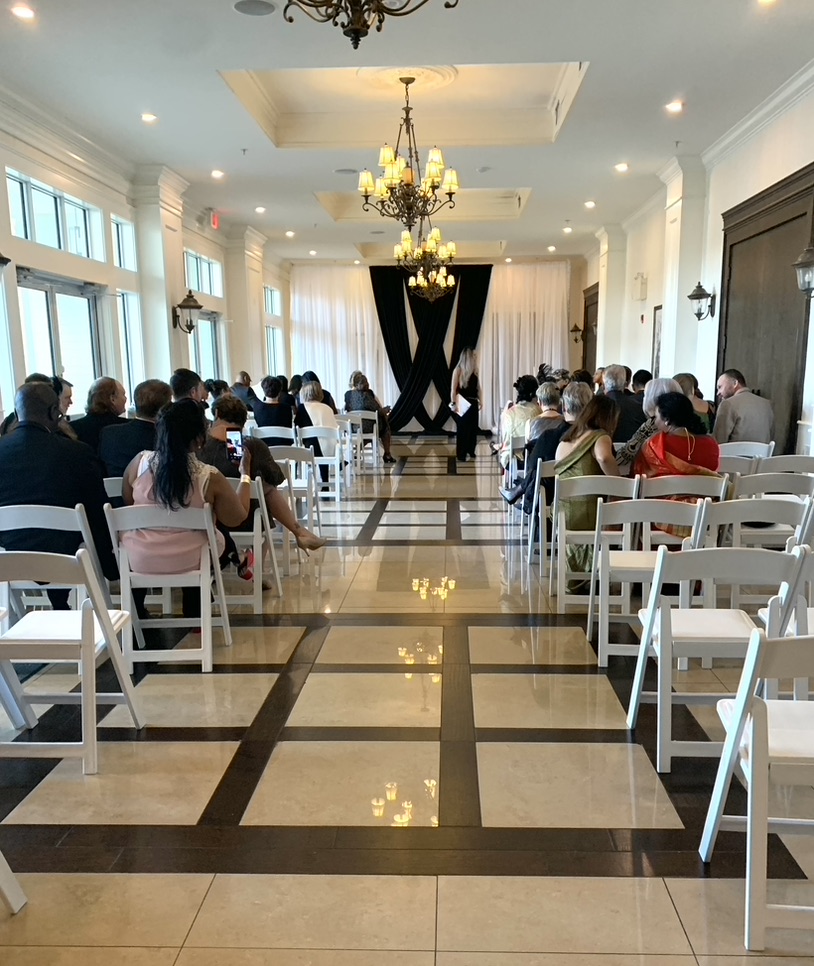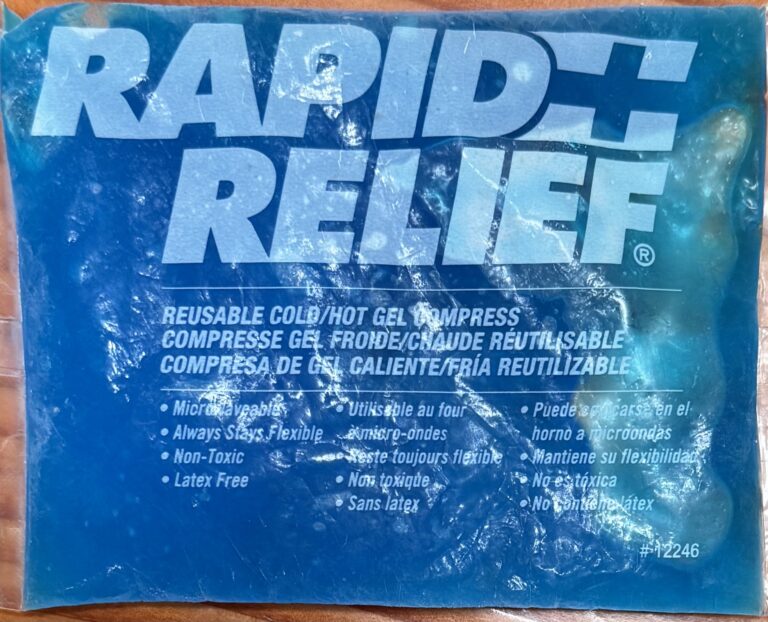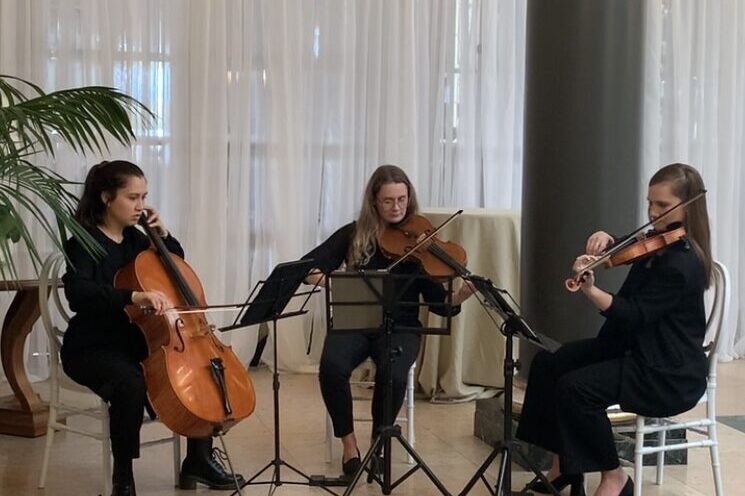The image of a wedding gown, floating in picture-perfect formation down the aisle is the thing of movies. I mean that literally. It is truly only in the movies!
In real life there is only one type of floor or substrate that will give you that scenario: a flat, smoothly polished surface (pictured above) is the only surface over which a wedding gown with a train will glide and retain its shape and trajectory. Otherwise, the surface will affect the smooth flow of the gown and train.
Carpets create friction, and the dress and train will drag a bit. Gravel or concrete or pavement will snag, sometimes damaging the dress or veil, and sometimes stopping you in your tracks! Grass will drag and snag, especially in the dryness of late summer. Forest paths are very exciting with twigs and brambles. Unsuspecting bugs may get caught in the dress if they don’t get out of the way in time! It’s important to think about the weight and filminess of the fabric of the dress and train. How will the fabric behave on the surface it’s travelling over?
To my mind, surfaces that are already part of the ceremony space are the best and require no enhancement. Sand, pavement, stone, grass, wood, carpet – they all work well enough, and they all have some drawbacks.

Let’s talk about venue carpets first.
Institutional carpet patterns are designed to not show dirt, spills and other sins. They’re often busy but usually not too jarring. They’re usually greys or browns, you know, nondescript and overlook-able. For us here on the Island, ceremonies are typically outside and receptions are inside, so the carpet of the reception space is immaterial. People are seated or dancing, and the carpeting rarely features in the photos. And if you’re looking at the carpet, it’s a bit of a boring wedding, no?


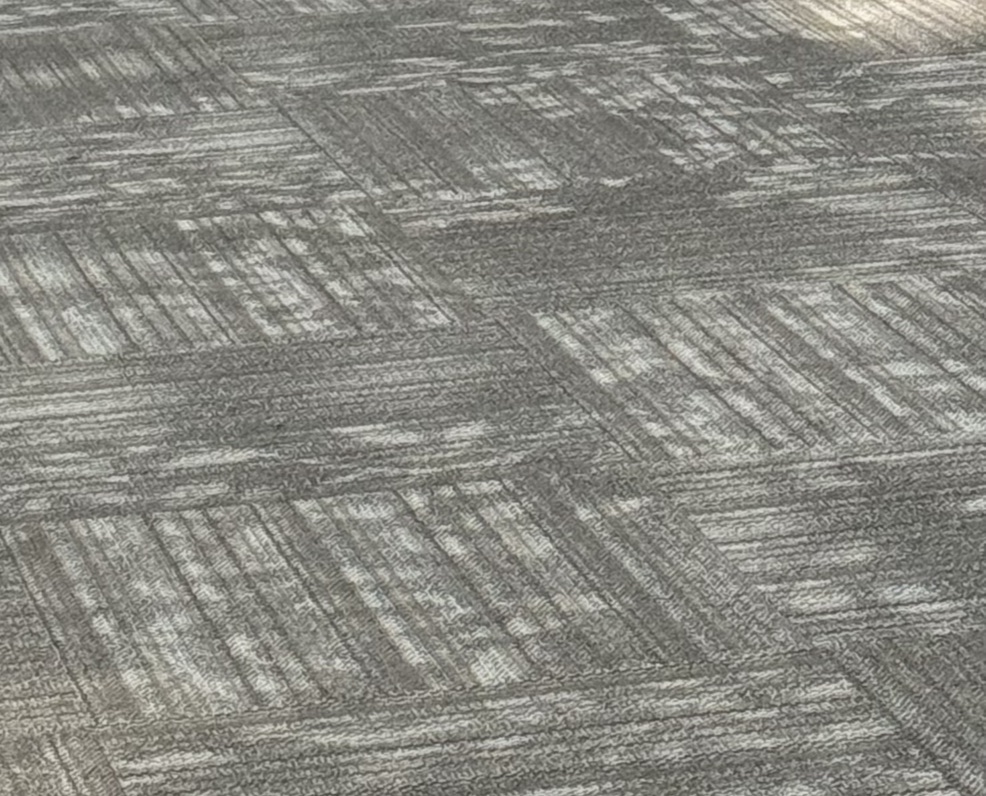

Sometimes you get deal-breakers:

Aisle runners are a different matter. They mark the path to the arch or altar. Usually they add a certain elegance or some degree of ambiance to the ceremony setting.
An aisle runner must be wide enough for two or three people to walk on side-by-side. In this setting, the runner was nice, but too narrow. Bride and escort each had one foot and one foot off the runner making for an uneven and ungainly entrance.
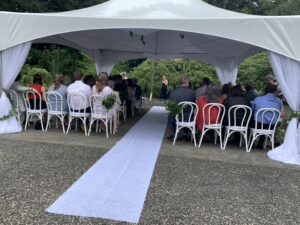
An aisle runner has to be heavy enough and have an appropriate backing so that it stays put. Heels should not puncture it. It should sit solidly on the substrate, and that substrate should be level. Any kind of a runner on a grassy or gravelly surface could be asking for trouble. Lawns and gravel or earth paths are not even and the runner will shift.

The aisle pictured below created a funny situation (well, fun for me to watch!) Guests were barred from stepping on this runner. It was only for the bride’s entrance. The grass was lush and this bespoke canvas-like runner floated on the surface of the blades of grass, about 5 cm above the earth the grass grew out of. It sank and rumpled with every step the bride and her escort took. After a few steps, her heel punctured the paper-fabric and she got stuck – her spiky heel had sunk through the runner into the ground – while her escort walked a couple steps ahead. The dress was huge and poufy, and guests had quite a job to help her get free of the runner. She ended up tip-toeing on the lawn at the side of the runner. It was not the dramatic entrance that was expected. During the ceremony, the planner pulled the offending runner out of the way so that the exit was uneventful.

Heavy area rugs that mark the altar space are usually fine and don’t cause problems. There is generally room for two or three people without any trouble. The people aren’t moving much, so there’s little danger of tripping.

Plastic aisle runners are the worst. First of all, they look really cheap. And they’re slippery: no friction, no grip. Think skating rink. Think water slide. The photo below shows a plastic runner on a highly polished wooden floor. The guests were slipping all over. The groom staggered down the aisle, gripping the pew seats as he shuffled along. The bride slipped and nearly landed on her backside after the third step in her stilettos! And of course, the flower vases in the aisle all got knocked over.

Your procession into the ceremony space should be celebratory adn somewhat gracious. It should not fill you with anxiety or cause injury! Make it as easy as possible for your guests, tor yourself, and for the wedding party to make a firm-footed entrance!

